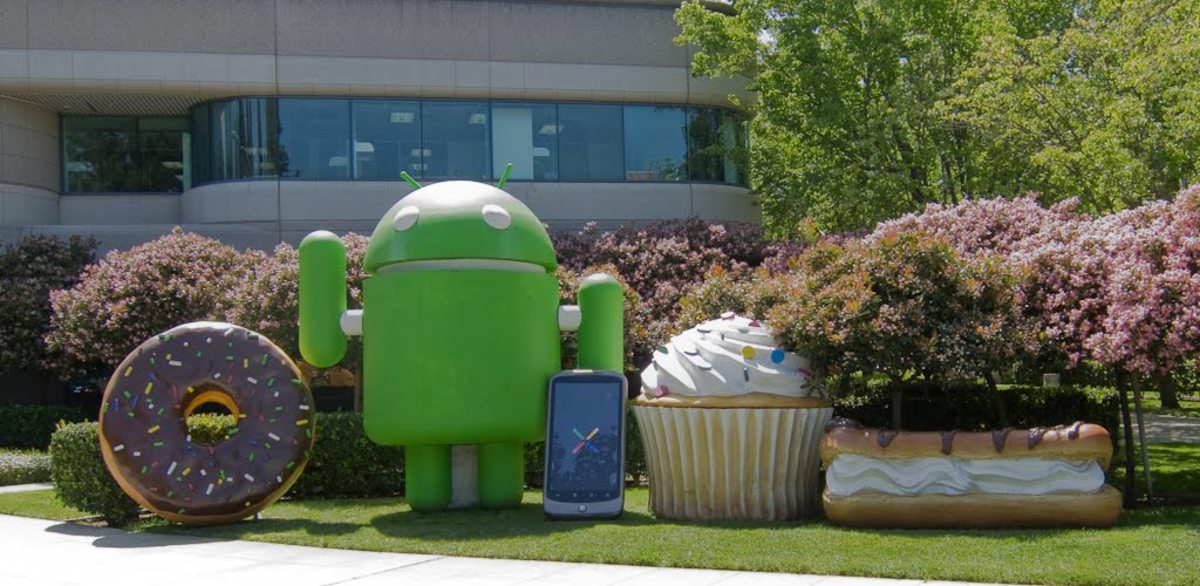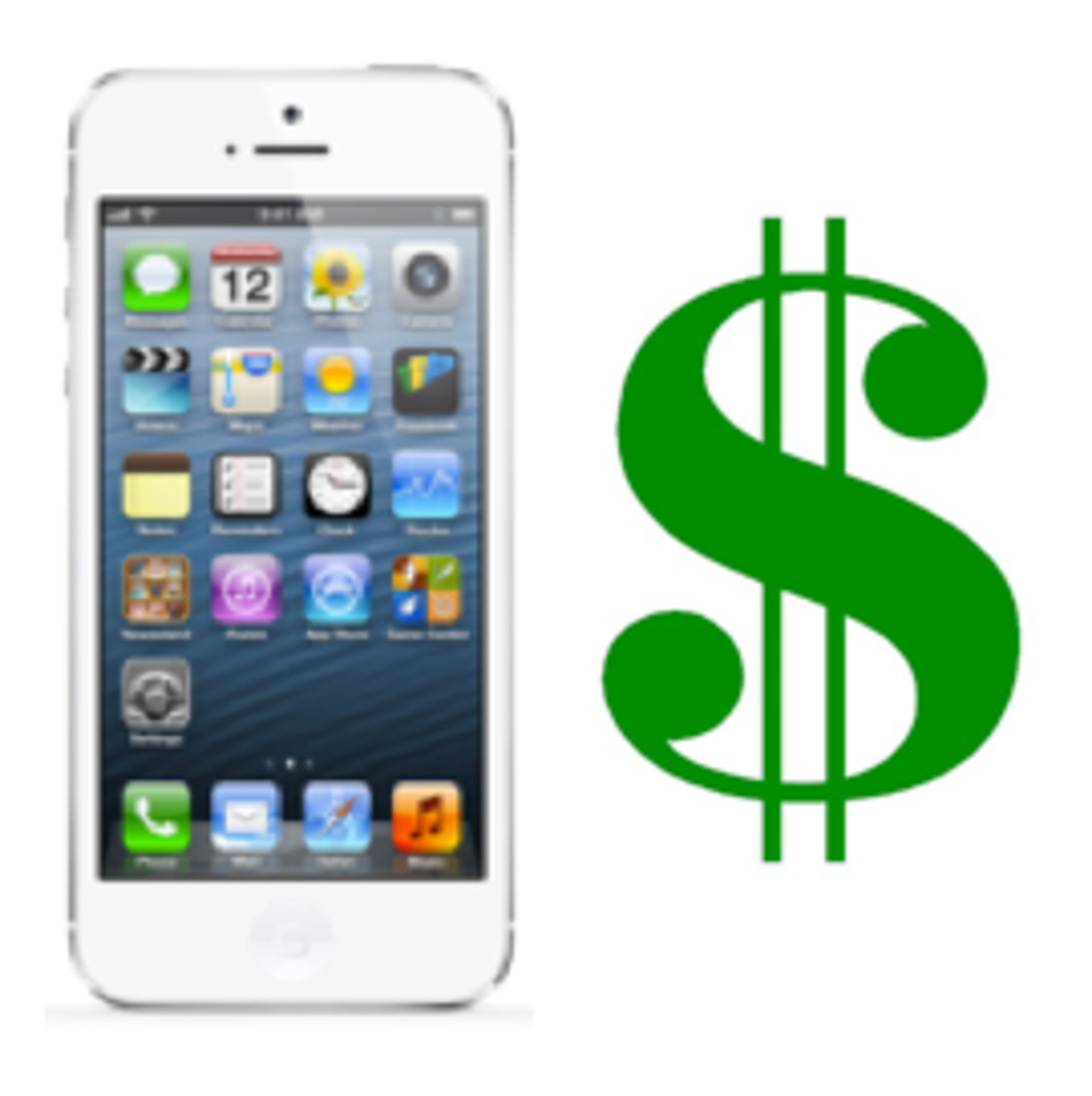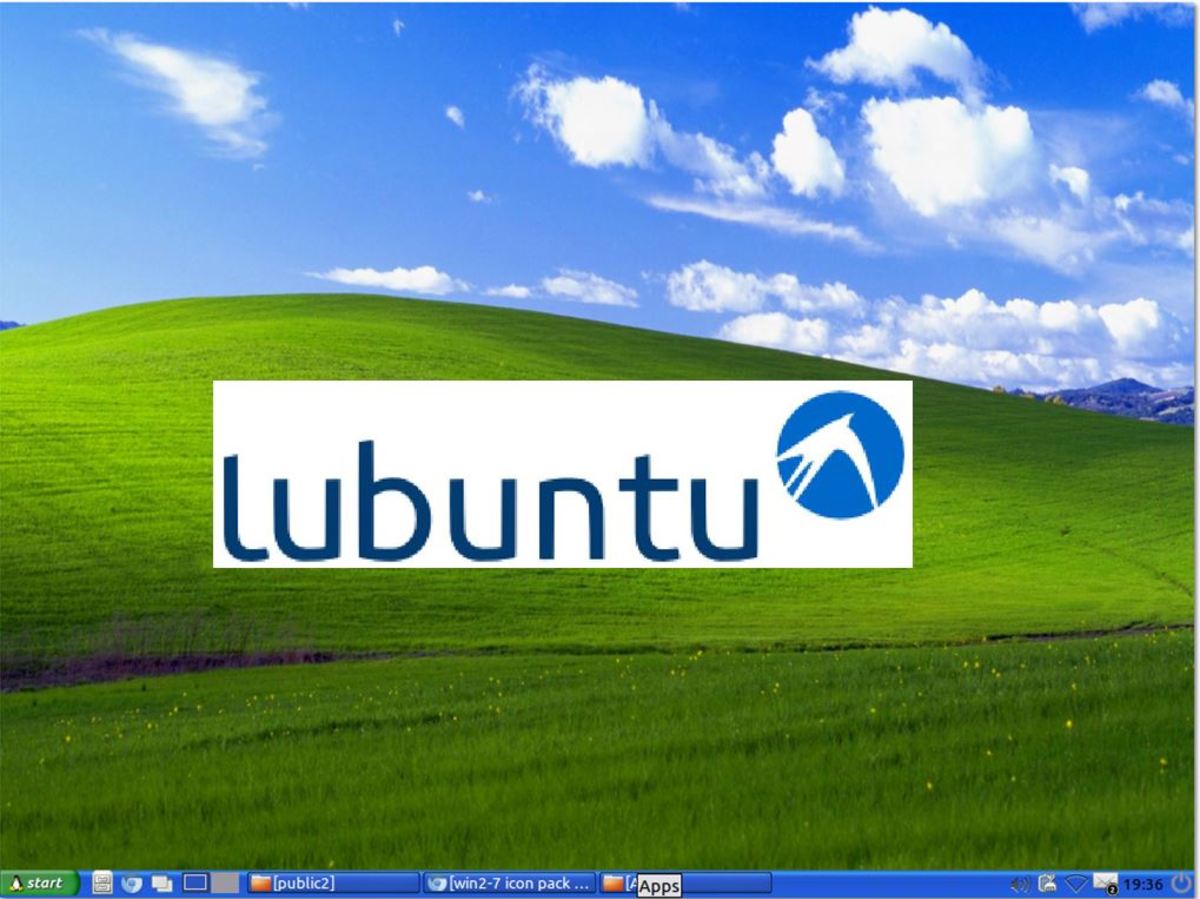The History Of...Android
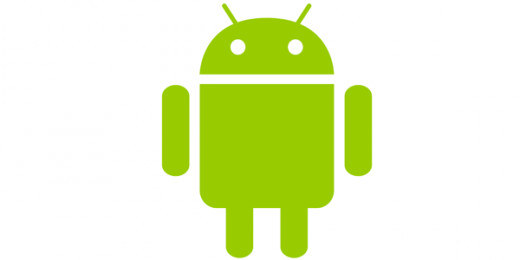
Android - it is a name you have probably heard of when buying your smartphone or tablet, but have never really contemplated what it is, what it does or who created it.
Today, we take a look back to the beginnings of Android, now powering over one billion smartphones across the globe. We also take a look at the future for Android, as the OS grows worldwide, how can the software be integrated into more consumer electronics.

Humble Beginnings
Andy Rubin is the core of this story, the hub, the life-blood and the energy that infused Android together. After Danger Inc had run its course, Rubin decided to make Android Inc with Rich Miner, Nick Sears and Chris White, all from notable technology backgrounds.
At first, the idea was to make a smart operating system capable of running on cameras, but given the small market and possibility of failure, the startup decided to tackle a bigger franchise, one Apple was just about to step into - smartphones.
When Android started becoming more than just a concept, the leaders in the phone market were Windows Mobile and Symbian. In 2005, Rubin and co ran out of money and eventually Google acquired the startup.
For the next two years, not much is known about the project. Andy Rubin lead the design team at Android and they continued work on the Linux kernel, then the iPhone hit. Steve Jobs, CEO of Apple at the time, unveiled what is arguably the biggest consumer electronics device in the past two decades - something that would crush all the mobile market leaders at the time.
Taking on a Giant
The iPhone launch shook the world, it was the future of mobile and the Android team knew it. They decided to scrap a lot of what had been put in for the past four years, set out on making an operating system competitive with iOS on the iPhone.
It was not until October of 2007 when Google, owners of Android, would show their hand in the smartphone arena, announcing the Open Handset Alliance.
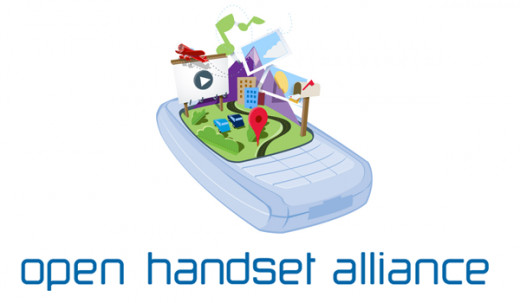
Open Handset Alliance
The Open Handset Alliance was a consortium filled with manufacturers and carriers, the end vision of having open standards for mobile devices. Samsung, HTC, Sony, Sprint, T-Mobile, Qualcomm and Texas Instruments were the first to join the alliance.
This was the spearhead move to Apple's iOS, where Apple's platform was closed and all work was done in house, Android wanted to be open and free for any carrier, manufacturer and chipset provider to change and redesign.
HTC Dream or T-Mobile G1 in the US was the first mobile available running Android. It had a QWERTY keyboard and an interface that looked more like a PC desktop than iOS, but it was Google's opening move into the smartphone business.
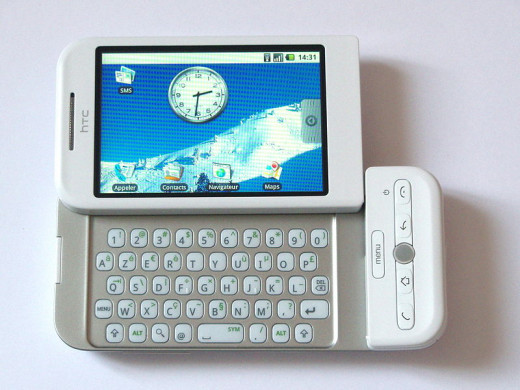
The Early Days
After the HTC Dream, the Android smartphones started rolling in. Early versions of the operating system came under scrutiny, while notifications were handled incredibly well and widgets were available, the bugginess of the system made many unsure.
Cupcake
Android 1.5 or Cupcake as it was codenamed was the first real "big" push into the mobile world. Apple had always shipped the iPhone with an on-screen keyboard, but until Cupcake no Android phone had soft touch keys, instead relying on the QWERTY keyboard.
Cupcake was also the first refinement process for Android, cleaning up some of the jagged edges, changing some of the user interface and icons to be more mobile friendly and adding new features like video playback, allowing the user to do more on the device.
Where Android 1.0 and Android 1.1 felt like prototype stages of Google's mobile project, Cupcake felt like Android had a definitive idea on what they wanted to do and this was the starting stage. It still had bugs, the UI was still pretty messy, but it was a start.
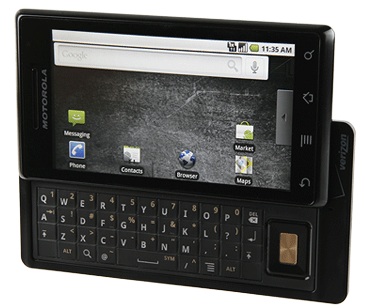
Eclair
Google wanted to keep up the trend of the names and Eclair or Android 2.0 was rolled out in November 2009, the most significant change since Cupcake. Donut (Android 1.6) was released a few months prior, but didn't encapsulate any massive changes for the day to day Android user, mostly future proofing the resolution and performance for the next generation.
The big star that really made Eclair shine was the Motorola Droid. Deployed on Verizon Wireless, this could be counted as one of the big reasons Android began gaining incredible market share across the globe, due to the high volume of Motorola Droid and other smartphone sales within this period, running Android.
Eclair was not just a visual update adding larger resolution, it brought multiple account support, integrated mobile Google Maps navigation, live wallpapers, speech to text and more customisations, among other changes.
This started Google's regular 0.1 updates to Android, Eclair 2.1, Froyo 2.2 and the behemoth Gingerbread 2.3 all came in little steps up the ladder, each bringing something new to the table.
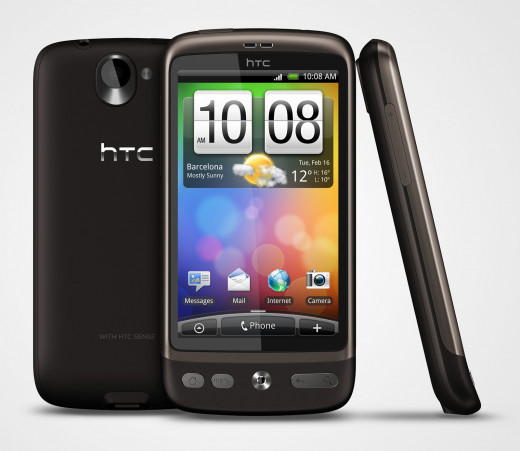
Froyo
After Eclair 2.1 started the Google Nexus program, Froyo decided to highlight the advantages of the Nexus phone, by updating the smartphone almost instantly to the newest version of the OS.
This was not the only thing the bump in the OS achieved, in fact Froyo was another big change in the redesign of Android, bringing some of the features that would be redefined in Gingerbread.
The bottom hub changed from the app draw launcher to a combined panel, with a phone, app draw and browser icon, alongside two dots either side, showing the user what home-screen panel they were currently viewing.
Gingerbread
This is where Android decided to go nuclear - almost every icon and visual animation changed from black/white/silver to green and the whole OS went tinge green. This was one of the first time's Android experimented with colors on the OS, instead of black and white for most icons.
On the overall scale of Android, Gingerbread 2.3 had as much influence as Froyo and Eclair, but the OS update will be remembered as the one that gained the most market share, sitting at over 70% at one time.
Game optimisation was a critical point of this update - allowing mobile game devs to make some good titles for Android. Considering at the time of Gingerbread, things like Angry Birds and Doodle Jump were hitting the iPhone, it was critical Android got game devs on their side.
Optimisation to the battery life, support for front facing cameras and changes to the touch-screen also made Gingerbread a stock user favorite. The fact that the next update would be aimed at tablets and hit the big 3.0 meant that Gingerbread held the most share on Android for some time.
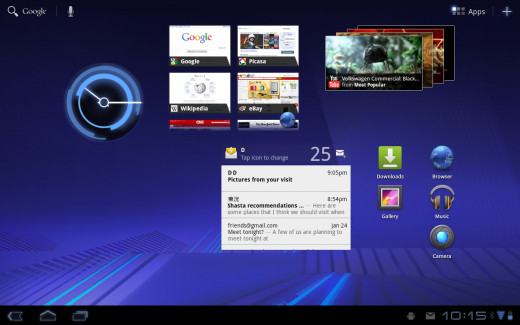
Skipping 3.0 into Ice Cream Sandwich
Android attempted to push into tablets with the launch and success of the iPad in 2010. The Motorola Xoom was their flagship product and it fell on its face against the iPad, not gaining any traction and showing Android needed to step back in some areas.
3.0 Honeycomb did bring the biggest advancement in functionality since Eclair 2.0, alongside redesigns to the home-screen, widgets, button placement and app layout. The big addition of on-screen buttons made stock Android fans cheer with glee and physical buttons started to fade out as no longer being necessary.
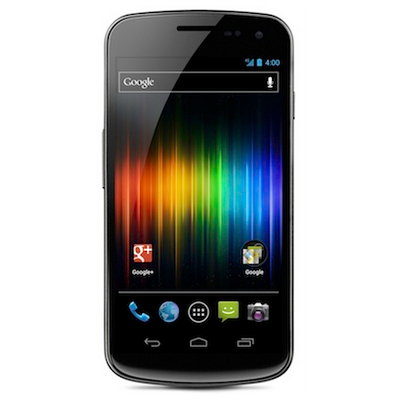
Ice Cream Sandwich
To make Honeycomb disappear, Android decided to launch Ice Cream Sandwich, a full 1.0 update to the operating system with the full intention of being on smartphones, as well as tablets.
The visual enhancements between Gingerbread and Ice Cream Sandwich are huge. Simply put, Ice Cream Sandwich was where Google and Android both learned how to design user interfaces that looked nice, clean, simple and elegant.
Transparency was a key feature on the redesign of the user interface. Where the Google Search, clock and other widgets previously stood out like a sore thumb on Gingerbread, they now were acceptable and faded into the background on Ice Cream Sandwich.
Android Ice Cream Sandwich also brought with it a ton of new features, including Android Beam (NFC), face unlock, data usage and new Google services applications.
Gingerbread had become a burden for Android and would continue to be until Android 4.2, where people finally started grabbing new smartphones and the market share of Gingerbread started dying down, after three years of dominance.
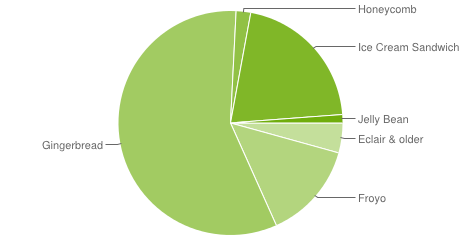
What does your phone run?
The Gingerbread Problem
After Ice Cream Sandwich, a lot of Android fans started noticing Gingerbread's incredible growth as an operating system. This became a big issue for Google, not only did most of their users run a 2 year old OS, but they would not be able to run their new operating system, due to OEM's giving up on the smartphone and not updating the firmware.
This resulted in two years of big fragmentation problems, which are just getting sorted out now as people move to another device. The good thing about mobile is the fast exchange rate, where somewhere will have the same PC for 10 years and never update the software, a mobile is likely to be updated every two/three years.
Still, this gave Apple a good few years to poke fun at Android. Where iOS users would constantly update their devices, Android had over 50% of their users on an old fragmented operating system, not being able to experience the newest Android had to offer.
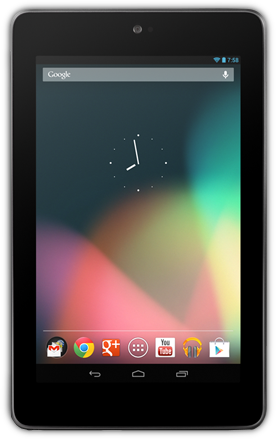
Three Jelly Beans
After the huge amount of new features on Ice Cream Sandwich, Android decided to bring back the 0.1 updates. The problem with Google is they do not understand 0.1 updates should be very small and insignificant, compared to full 1.0 updates.
Jelly Bean 4.1
Jelly Bean 4.1 was announced at Google's I/O on April 2012 and reaffirmed Google's commitment to the Android tablet world, after the Motorola Xoom failure on Honeycomb.
The major feature on Jelly Bean 4.1 was Google Now - the intelligent assistant similar to Siri on iOS. Not only did Google Now offer search results, notification and reminders, it also had built in features, pulling data from your location and Google services and providing valuable information at the right time.
On top of Google Now, Jelly Bean 4.1 brought functional notifications, predictive text and a new redesigned Roboto font, alongside more moves to make widgets and icons more transparent and immersive.
Jelly Bean 4.2 & 4.3
The Jelly Bean moniker carried on from 4.1, continuing to 4.2 and 4.3, both were very small updates on the grand scheme, a little less exciting compared to Ice Cream Sandwich's huge redesign and 4.1 adding Google Now.
Jelly Bean 4.2 added multiple user accounts and Android redesigned clock widgets, alongside their 360 Photosphere camera feature for users to take panoramas.
Jelly Bean 4.3 brought OpenGL ES 3.0 graphics for better gaming on Android, alongside a slew of new updates and optimisation, showing Android's commitment to making the platform run much smoother.
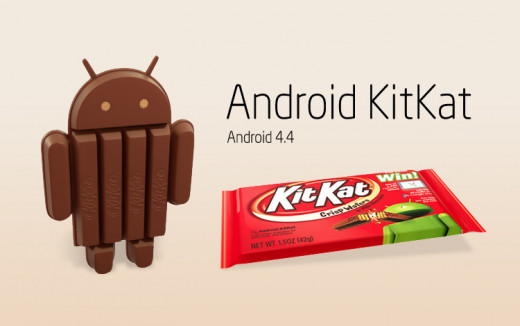
KitKat
KitKat 4.4 is the next 0.1 update, but it brings with it a lot of new features, not on one single device, but for every device adding KitKat 4.4 now and in the future.
The major update is on the system requirements, Android smartphones can now run KitKat on 512MB of RAM, whereas previously they needed 1GB. This is on top of the OS running a lot smoother on lower end processors and basically adding more value to low-end phones.
KitKat also brings us to a new level of Google design. We looked at this on Eclair, Gingerbread and Ice Cream Sandwich on a design level.
In Eclair, Android was finally being realised as a prominent platform, Gingerbread was the understanding of the platform and what can be achieved, Ice Cream Sandwich was Android really showing the beauty that can be achieved and KitKat feels like it is showing off.
Everything from the font size to the menu animations to the different widgets feels built for purpose and design. A widget is no longer just a smart tool with no compelling attributes, it is a finished tool that works from both a design and a function standpoint.
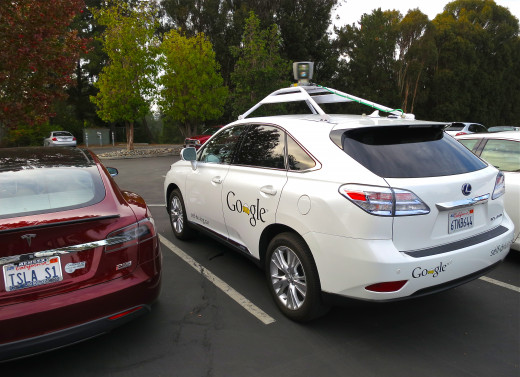
The Future
Android is steamrolling ahead into the future, at around 70% of the smartphone market share and 40% of the tablet, the future looks pretty good for Android, but they will not contain themselves to just two markets.
In the near future, cars, smartwatches and televisions look to take on Android. We are already seeing the Open Automotive Alliance take its first form, with a few car manufacturers partnering up to put Android into their car systems.
Smartwatches are another exciting and close market, we have seen Samsung, Sony and a few others adding their own take on the smartwatch market, but it may take some time for Android to reel partners into working on the platform, instead of building their own.
Televisions are another area for expansions, there are Google TVs, but these are largely unpopular. WebOS TV is now a thing thanks to LG re-working the system and it could mean OEM partners look to join forces with Android and build their own TV content alongside the Google Play store.



